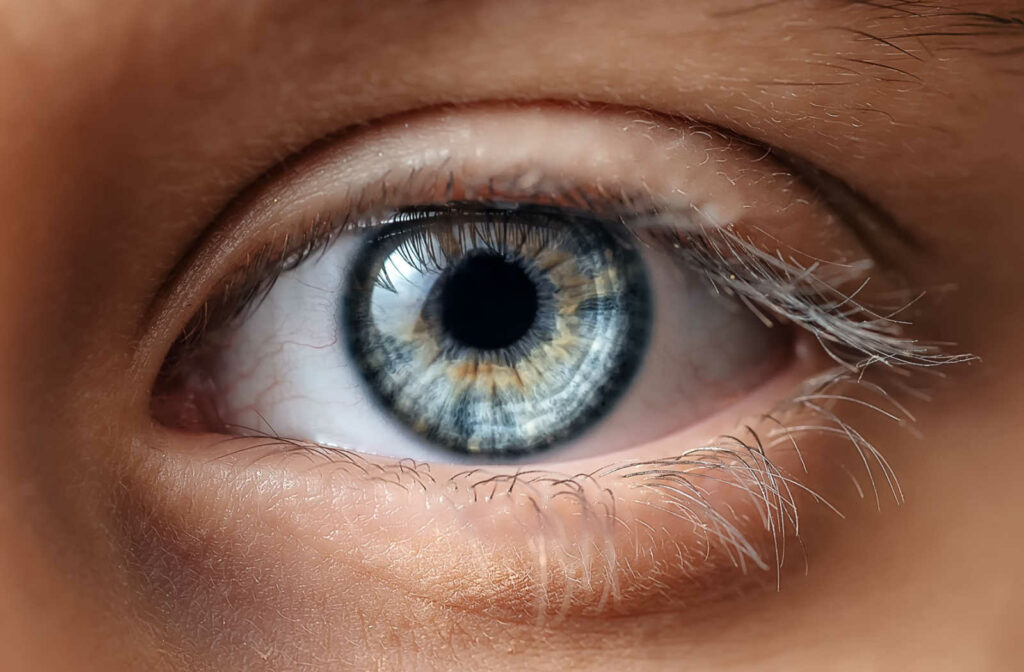We rely on our vision to see the beauty of nature, read books, drive a car, and connect with others. Therefore, you should not take any changes in your vision lightly. A problem such as having yellow spots in your vision could result from many conditions, such as:
- Head injuries
- Migraines
- Retinal detachment
- Medication side effects
- Melanoma
Maintaining regular eye exams and letting your optometrist know if you notice any unusual symptoms, such as seeing spots, is essential. It might not be anything serious, but it’s always better to know for sure.
Seeing Yellow Spots After Head Injuries
Head injuries can cause a range of vision problems, including yellow spots. When the head is injured, such as through sports or accidents, it can cause damage to the brain or the optic nerve, affecting your vision.
Head injuries can also cause bleeding in the eye, which can lead to yellow spots. If you have recently experienced a head injury and are experiencing vision changes, seek medical attention immediately.
Seeing Yellow Spots Due to Retinal Conditions
The retina is the part of the eye that contains the cells responsible for detecting light and sending visual signals to the brain. Several conditions can affect the retina and cause yellow spots.
Retinal Detachment
When your retina separates from the back of your eye, it can cause your cells to fire randomly. This could result in you seeing flashing lights or colored spots. A detached retina is a serious condition, and you should see a doctor as soon as possible if you suspect you have it.
Other symptoms of a detached retina include:
- Lots of floaters
- Shadows at the edge of your vision
- A “gray curtain” over your vision
Diabetic Retinopathy
Diabetic retinopathy affects people with diabetes and is caused by damage to the blood vessels in the retina. This damage can result in fluid leaking into the center of the retina, an area called the macula, leading to blurred vision, spots, floaters, and a dark hole in the middle of your vision.
Yellow spots could also indicate a retina infection or damage from staring at the sun.

Seeing Yellow Spots from Migraines with Auras
Migraines are a neurological condition that can cause severe headaches, nausea, and sometimes visual disturbances. These disturbances are called auras and can occur before and during a migraine.
Depending on the person, visual disturbances can include yellow spots, as well as zigzag lines, flashing lights, and blind spots. Various factors, such as stress, certain foods, and hormonal changes, can trigger migraines.
Seeing Yellow Spots Related to Eye Melanoma
Just like you can develop melanoma in your skin, your eye pigment is also vulnerable. Eye melanoma can cause yellow flashing spots and other vision changes, such as blurred vision and loss of peripheral sight.
Sun overexposure is typically the cause of eye melanoma. Therefore, make sure you wear sunglasses when outside to lower your risk of developing this serious condition.
Seeing Yellow Spots After Transient Ischemic Attack
A transient ischemic attack (TIA) is a mini-stroke that occurs when blood flow is blocked temporarily. TIAs can cause a range of symptoms, such as numbness, weakness, and difficulty speaking.
However, if the blood vessel being blocked leads to your eye, it can cause a loss of vision or yellow spots to appear. TIAs are a warning sign you may be at risk for a more severe stroke. Seek medical attention immediately so your doctor can work with you to promote proper blood flow.
Seeing Yellow Spots as a Side Effect of Medications
Certain medications for treating heart conditions list seeing spots or random patterns of light as side effects. For example, ivabradine, a medicine used to treat some adults with heart failure, is known to affect your vision, potentially causing you to see bright spots or bright colored lights.
Another heart failure medication, digoxin, doesn’t necessarily cause yellow spots but can result in vision with a yellow-green tint. If you’re taking any medication and notice a vision change, inform your doctor, as they may be able to adjust your medication or provide you with an alternative treatment.
Seeing Yellow Spots Due to Radiation
Radiation exposure can cause various health problems, including changes in your vision. While it’s rare for most people to be exposed to a level of radiation that can cause symptoms such as this, radiation therapy is a standard cancer treatment that requires exposure to high-energy radiation.
An estimated 70% of people who had radiotherapy for melanoma experienced seeing lights or colors, a phenomenon known as phosphenes. These typically go away once the radiation stops, but it’s possible for exposure to lead to retinal conditions such as radiation retinopathy.
When Should I See an Optometrist?
If you notice any changes in your vision, including yellow spots, you should schedule an appointment with an optometrist as soon as possible. Early detection and treatment of eye diseases may help prevent vision loss and improve overall eye health.
Additionally, if you have a family history of eye disease or other risk factors, such as diabetes or high blood pressure, you should monitor your eye health and have regular eye exams.
Los Angeles EyeCare Optometry Group’s knowledgeable team can evaluate your vision and, if we find something, are dedicated to finding solutions and management options for eye conditions. Don’t ignore the little things when it comes to your vision. If you’re seeing spots, book an appointment today.



